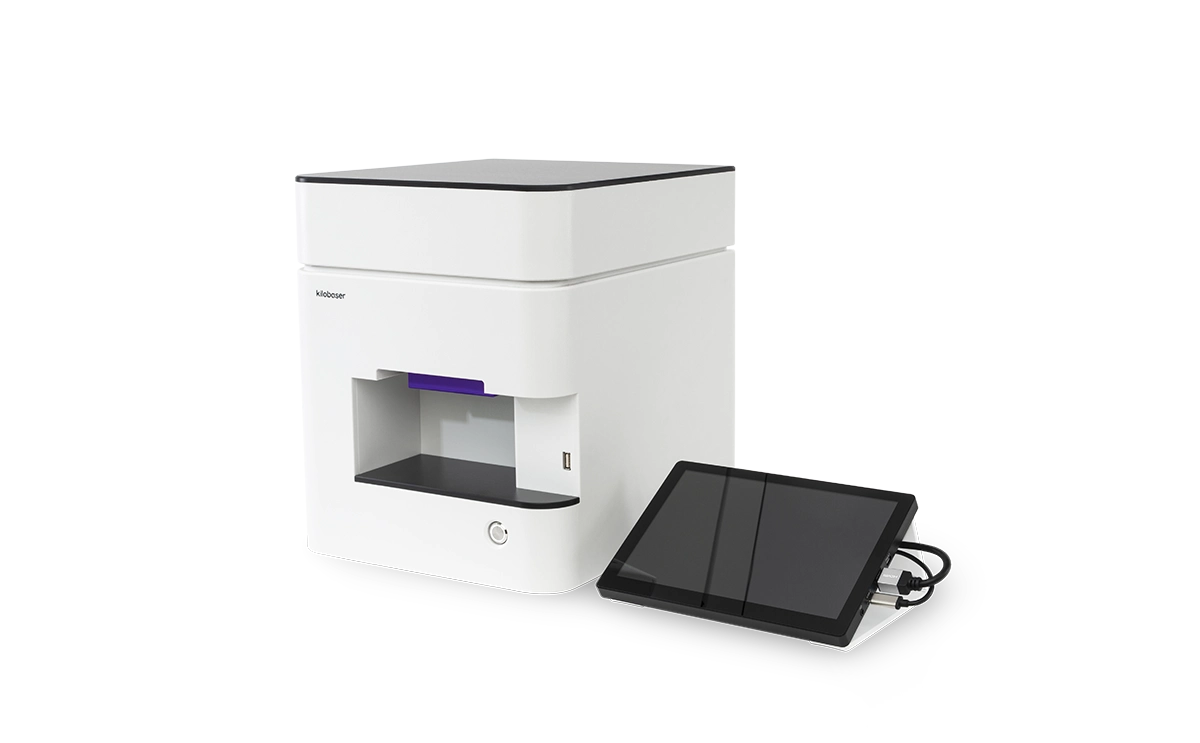Primer design to detect SARS-CoV-2 Variants
Here we describe a possible design for a multiplexing RT-qPCR for detection of Severe acute respiratory syndrome coronavirus 2 (SARS-CoV-2), which does not only allow us to determine a coronavirus infection, but also to distinguish the variant causing it.

Currently, variants of SARS-CoV-2 are only detected via sequencing of the samples after positive RT-qPCR. As the sequencing is time and labor intensive, typically only a few samples are analyzed either randomly to control the evolution of the virus or specifically in case of suspected cases. [1]
However, in situation where fast actions are required to limit the spreading of new variants regionally it would be of clear advantage, if the immigration of variants can be quickly evaluated to help preventing the further spreading. As some variants in the spike protein are also associated with higher transmission efficiency or even higher mortality, knowing the variant is getting more and more important to improve prevention and treatment of infections.[2,3]
What is multiplexing qPCR?
Probe-based qPCRs allow the detection of up to 4 different target DNA by using probes emitting at different wavelength and is known as multiplexing.
Multiplexing is already used for RT-qPCR detection of SARS-CoV-2, but its main purpose is to avoid false negative and false positive test results. For instance, one primer-probe set targets a part of human gene to determine that there is enough sample taken from the patient. The other three primer-probe sets target different part of the SARS2CoV conserved gene such as ORF1 and N gene.[4]
Here, we design primer-probe sets for different SARS-CoV-2 variants that in combination with N gene detection, not only the determination of an infection, but also allow to distinguish the current variant in a single PCR reaction.
Which variants are targeted?
Since the SARS-CoV-2 outbreak in Wuhan in November 2019 several new variants have emerged regionally and are spreading globally. In Europe, for instance, the variant B1 has completely replaced the original virus from Wuhan.[5] But also this lineage is becoming outpaced by new variants such as the variant B.1.1.7 found in UK.
As we are located in Graz, Styria (AT), we targeted SARS-CoV-2 variants that are currently spreading in Austria (state: march 2021) such as B.1.1.7 from UK and B.1.351 from South Africa. Therefore sequences representing variants spreading in Austria were used for the primer design. In more detail we used sequences found on the Global Initiative on Sharing All Influenza Database (GISAID):
For B.1.1.7: hCoV-19/env/Austria/CeMM4543/2021 (EPI_ISL_1209359) provided by the Institute for Water Quality and Resource Management
For B.1.351: hCoV-19/Austria/CeMM3592/2021 (EPI_ISL_1180727) provided by the IHG Pharma GmbH.
How are suitable primer and probes designed?
STEP 1: Decide the target sequence
The design of primers and probes for qPCR starts with the selection of target DNA sequences, on which they hybridize. In order to distinguish the variants from each other, target sequences should include at least one of the mutations that are highly conserved and thus representative for a SARS-CoV-2 variant.
The following table lists the variants of B.1.1.7 and B.1.351 and their characteristic mutations of the spike protein that differentiate them from the original Wuhan virus. The position of these mutations was first determined in the sequences of the in Austria found samples and then evaluated for the use as primer sequence.
Table 1:
Mutations in spike protein found in SARS-CoV-2 variants B.1.1.7 and B.1.351 of samples collected in Austria
|
Virus variants |
Mutations1 |
Position in sample sequence |
Changes in nucleotide sequence |
|---|---|---|---|
|
B.1.1.7 |
HV 69-70 |
21702 |
Deletion |
|
Y144 |
21920 |
Deletion | |
|
N501Y |
22991 |
A to T | |
|
A570D |
23199 |
C to A | |
|
D614G |
23330 |
A to G | |
|
P681H |
23532 |
C to A | |
|
A688V2 |
23553 |
C to T | |
|
T716I |
23627 |
C to T | |
|
S982A |
24434 |
T to G | |
|
D1118H |
24842 |
G to C | |
|
B.1.351 |
D80A |
21738 |
A to C |
|
D215G |
22142 |
A to G | |
|
LAL242-244 |
22220 |
Deletion | |
|
K417N |
22741 |
G to T | |
|
E484K |
22940 |
G to A | |
|
N501Y |
22991 |
A to T | |
|
D614G |
23330 |
A to G | |
|
A701V |
23592 |
G to T | |
|
A879S SS2SS |
24125 |
G to T |
1…Numbers stand for the position in the Wuhan virus.
2…These mutations are only found in the Austrian samples of the respective variant.
STEP 2: Finding potential primer and probe sequences
There are different criteria primers have to fulfill for proper qPCR. The sequence of the primer decides for the specificity, while its length and composition affects the polymerase efficiency. Additionally a suitable probe sequence close to one of the primers has also to be found.
Ideally both primers cover one of the variant characteristic mutations. However the resulting amplicon should also be smaller than 150 bp for efficient qPCR amplification. Additionally for multiplexing all generated amplicons should be of similar size. If we consider the CDC recommended primer set for N gene detection, the resulting amplicons should be around 70 bp long. Therefore primer were evaluated to obtain an amplicons between 70 and 100 bp. Beside that all found primers should feature similar Tm and %GC values for optimal PCR amplification.
However, the most important feature of the primer-sets is their potential to distinguish the single nucleotide mutation, which were determined using the following criteria:
Recognition of two mutated regions: Both forward and reverse primers bind on mutated regions respectively. Thus an amplicon is only generated when both mutations are present.
Using Deletions: A primer is designed to bind efficiently at the present of the deletion, as otherwise it is too short and thus hybridization requires conformational changes of the strand.
Temperature sensitivity: In case of a mutation, if an A or T is exchanged with an C or G the Tm of the primer changes significantly. Thus only the presence of this mutation allows stable annealing during PCR.
Compared to the single nucleotide mutations, deletions were expected to induce the highest specificity. These regions were therefore chosen as first starting point to determine the respective primer and probe sequences.
Primer-Probe sets for B1.1.7
The B.1.1.7 variant features two deletions, H69/70 (21702) and Y144 (21920). Both deletions were first tested as forward primer and then the reverse primer as well as the probe sequence was searched in the area resulting from the position of the forward primer. Thereby the best combinations were found for the first deletion allowing the synthesis of either a 94 bp or 77 bp long amplicon. The resulting sequences are summarized in table 2.
Primer-Probe sets for B1.351
In case of the B1.351 variant, two mutation could be found in close distance to each other allowing each primers to cover a mutation respectively: D215G (22142) and L242 (22220). The sequences of the primers were adjusted to obtain a 97 bp amplicon and are summarized in table 2.
Table 2: Potential primer-probe-sets allowing detection of respective variant
|
Set name |
Primer/probe |
Nt position 5’end |
Sequence |
Nt position 3’end |
Tm [°C] |
|---|---|---|---|---|---|
|
B.1.1.7 |
Forward primer |
21698 |
GCTATCTCTGGGACCAATGG |
21717 |
60.5 |
|
Reverse primer |
21791 |
TGTTAGACTTCTCAGTGGAAGC |
21770 |
60.3 | |
|
Probe |
21720 |
CTAAGAGGTTTGATAACCCTGTCCTACC |
21747 |
68.7 | |
|
B.1.1.7 |
Forward primer |
21689 |
TGGTTCCATGCTATCTCTGG |
21708 |
58.4 |
|
Reverse primer |
21765 |
TAAACACCATCATTAAATGGTAGG |
21742 |
58.4 | |
|
Probe |
21711 |
CCAATGGTACTAAGAGGTTTGATAACCC |
21738 |
67.2 | |
|
B.1.351 |
Forward primer |
22131 |
ATTTAGTGCGTGGTCTCCCT |
22150 |
58.4 |
|
Reverse primer |
22227 |
CTATGTAAAGTTTGAAACCTAGTG |
22204 |
58.4 | |
|
Probe |
22200 |
TTAATACCTATTGGCAAATCTACCAATGG |
22172 |
64.8 |
STEP 3: Testing the primer-probe set with the other virus sequence
A crucial element in multiplexing PCR is that the primers are not interacting with the other targeted sequences.
In case of the primer sets to determine B.1.1.7, the sequences of the forward primers and the probes were not found in the sequence of B.1.351. And although the reverse primer of the B.1.1.7 sets can bind on the sequence of B.1.351, their position to the other primers does not allow the formation of an amplicon.
As both primers in the B.1.351 primer set consist the mutations, the sequences of both primers can not be found in the sequence of B.1.1.7.
Therefore it can be concluded that binding and degradation of the respective probe occurs only in present of the targeted variant. Thus a multiplexing RT-qPCR might be performed using primer-probe set to detect the present of the N gene, the B.1.1.7 and the B.1.351 specific mutations as well as a host gene.
What comes next?
The last step for realizing such a multiplexing RT-qPCR is the validation, which requires beside the primer and probe synthesis, the samples containing the target genes and thus also intensive cooperation of qualified labs for sample collection and assay testing. Research groups such as Grubaugh lab have already performed preliminary tests with similar primer-probe-set confirming our approach.[6]
For other regions or states, different targets might be more of concern. As long the pandemic progresses other mutations may arrive requiring new sets of primer and probes. However, as soon as sequences are available these sets can be quickly designed as shown here.
1. Genomic sequencing of SARS-CoV-2: a guide to implementation for maximum impact on public health. Geneva: World Health Organization; 2021. https://www.who.int/publications/i/item/9789240018440
2. Hoffmann, M., et al.: A Mulitbasic Cleavage Site in the Spike Protein of SARS-CoV-2 Is Essential for Infection of Human Lung Cells. Molecular Cell 78, 779–784 (2020), doi.org/10.1016/j.molcel.2020.04.022.
3. Wang, Q. et al.: Structural and Functional Basis of SARS-CoV-2 Entry by Using Human ACE2. Cell 181(4), 894-904 (2020), doi.org/ 10.1016/j.cell.2020.03.045.
4. Petrillo, S. et al.: A Novel Multiplex qRT-PCR Assay to Detect SARS-CoV-2 Infection: High Sensitivity and Increased Testing Capacity. Microorganisms 8, 1064 (2020), doi.org/10.3390/microorganisms8071064.
5. Korber, B., et al.:Tracking Changes in SARS-CoV-2 Spike: Evidence that D614G Increases Infectivity of the COVID-19 Virus. Cell 182 (8), 812–827 (2020), doi.org/10.1016/j.cell.2020.06.043
6. Vogels, C and Grubaugh, N et al.: PCR assay to enhance global surveillance for SARS-CoV-2 variants of concern. published at medRxiv preprint on March 12, 2021, doi: doi.org/10.1101/2021.01.28.21250486
You want to learn more about Kilobaser?
You are only 3 steps away from your ready-to-use DNA. Take a closer look and let us explain all the details in your exclusive demo!

Share this article: